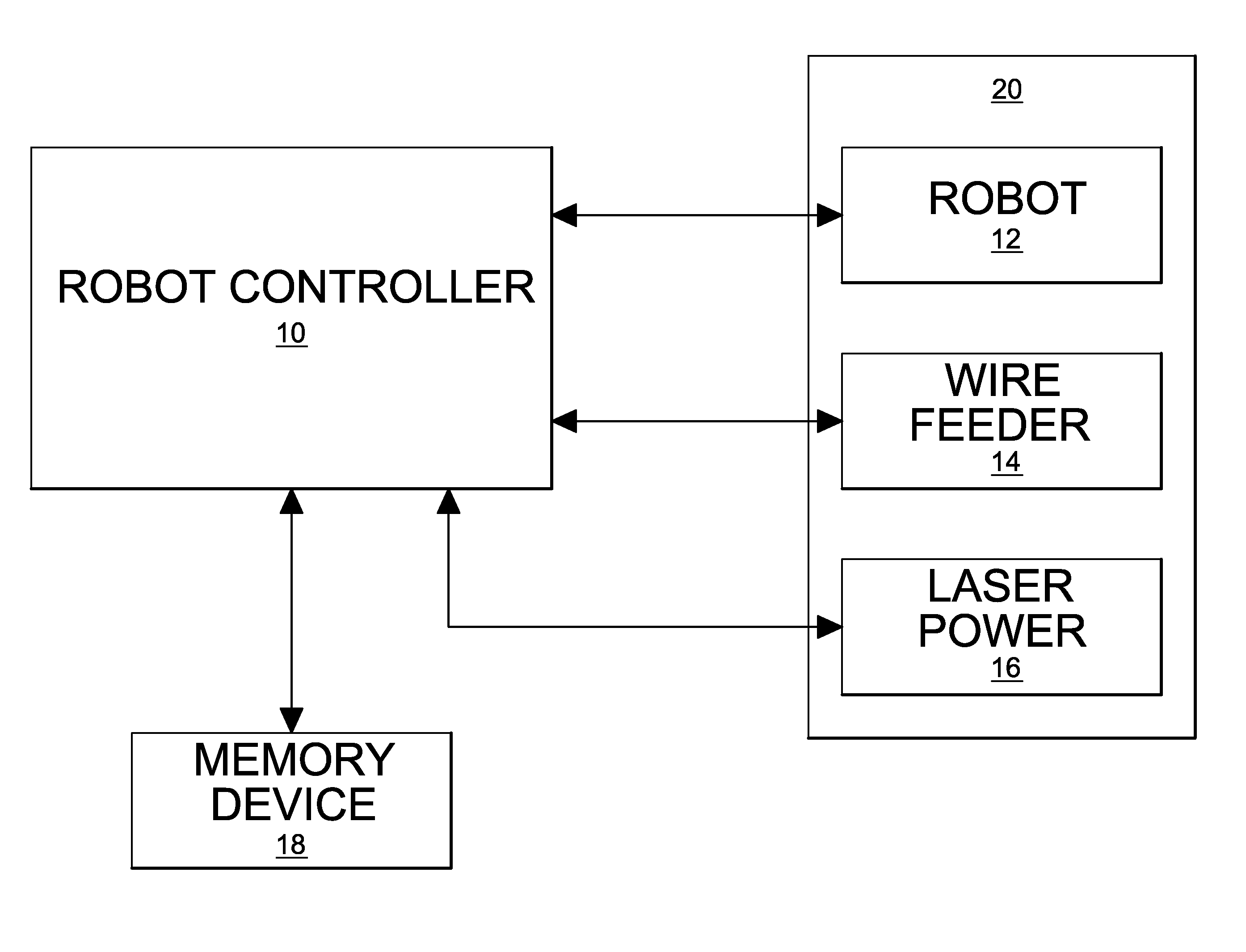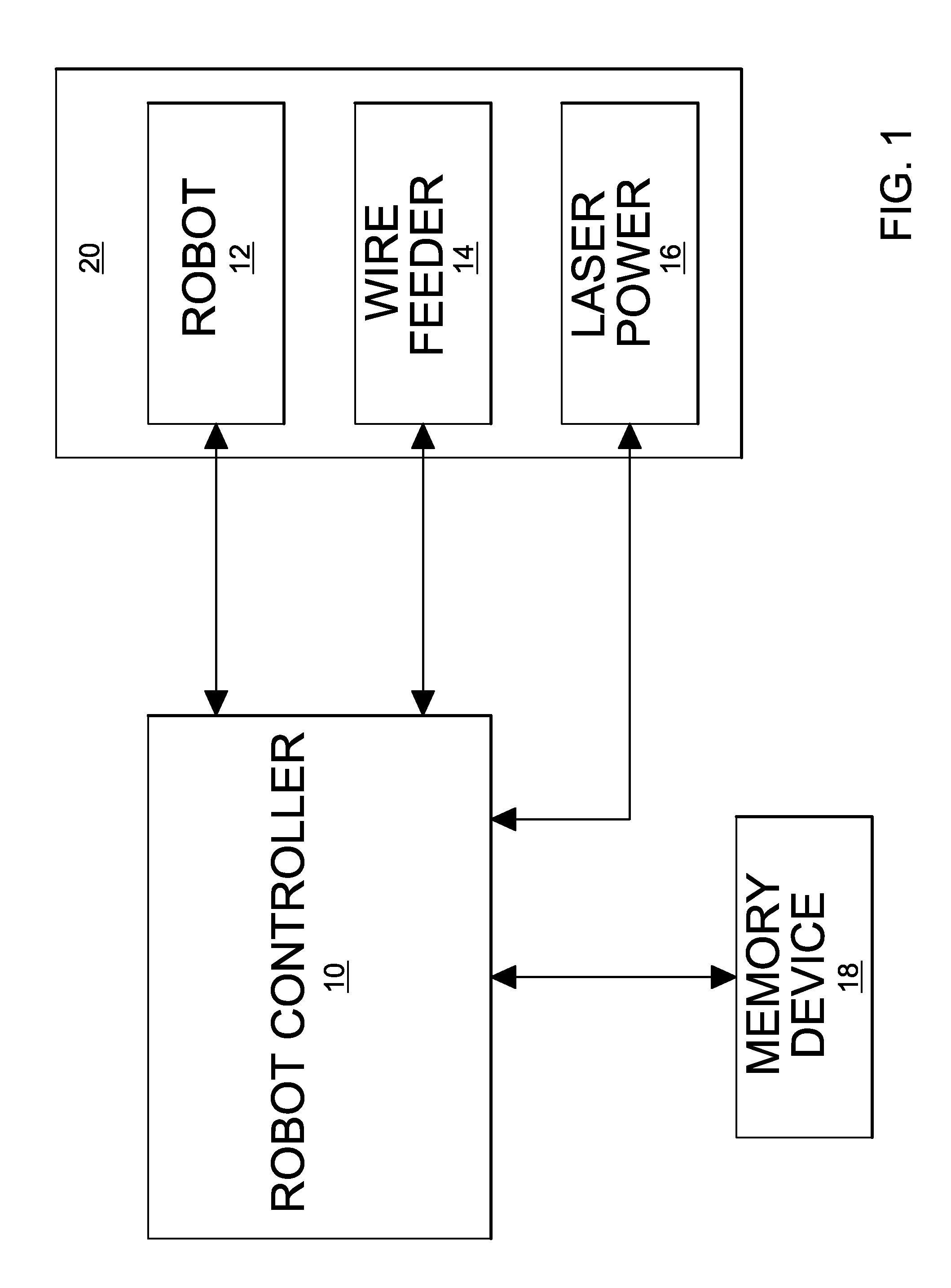Adaptive control of robotic laser braze/weld operation
a technology of adaptive control and laser brazing, which is applied in the field of robot control, can solve the problems of insufficient signal timing adjustment capability of current software, process is not optimal, and it is difficult to synchronize the timing control between laser power and wire feed speed during laser power changes
- Summary
- Abstract
- Description
- Claims
- Application Information
AI Technical Summary
Benefits of technology
Problems solved by technology
Method used
Image
Examples
Embodiment Construction
[0019]The following detailed description and appended drawings describe and illustrate various exemplary embodiments of the invention. The description and drawings serve to enable one skilled in the art to make and use the invention, and are not intended to limit the scope of the invention in any manner. In respect of the methods disclosed, the steps presented are exemplary in nature, and thus, the order of the steps is not necessary or critical.
[0020]As shown in FIG. 1 an apparatus for performing the adaptive control of a robotic laser braze / weld operation includes a robot controller 10 controlling the movement of a robot arm 12 that carries the brazing / welding tools. The controller 10 also controls process parameters 20 that affect the brazing / welding operation. As non-limiting examples, such process parameters 18 may include the wire feed rate of a wire feeder 14 and the power value of a laser power supply16. A software program for coordinating the robot movement, wire feed rate ...
PUM
| Property | Measurement | Unit |
|---|---|---|
| Time | aaaaa | aaaaa |
| Speed | aaaaa | aaaaa |
| Acceleration | aaaaa | aaaaa |
Abstract
Description
Claims
Application Information
 Login to View More
Login to View More - R&D
- Intellectual Property
- Life Sciences
- Materials
- Tech Scout
- Unparalleled Data Quality
- Higher Quality Content
- 60% Fewer Hallucinations
Browse by: Latest US Patents, China's latest patents, Technical Efficacy Thesaurus, Application Domain, Technology Topic, Popular Technical Reports.
© 2025 PatSnap. All rights reserved.Legal|Privacy policy|Modern Slavery Act Transparency Statement|Sitemap|About US| Contact US: help@patsnap.com



